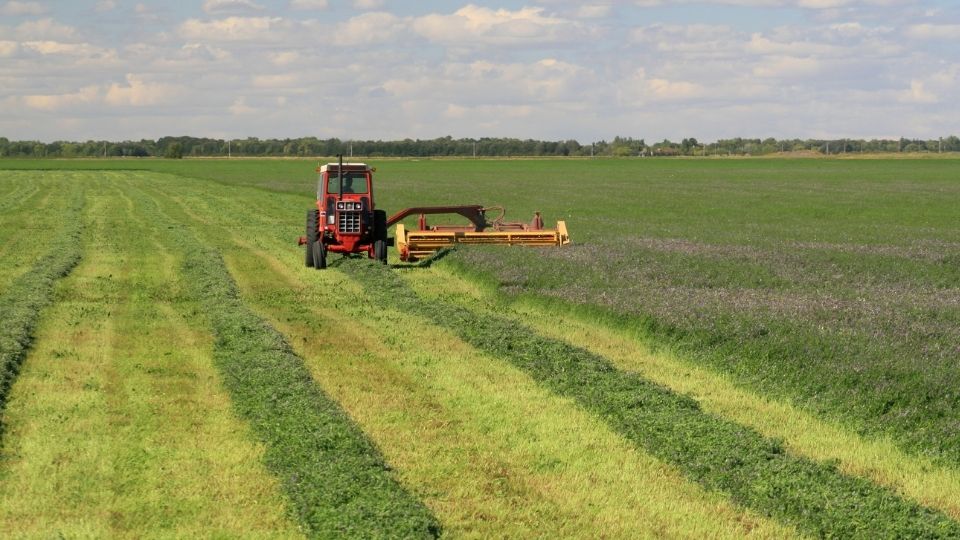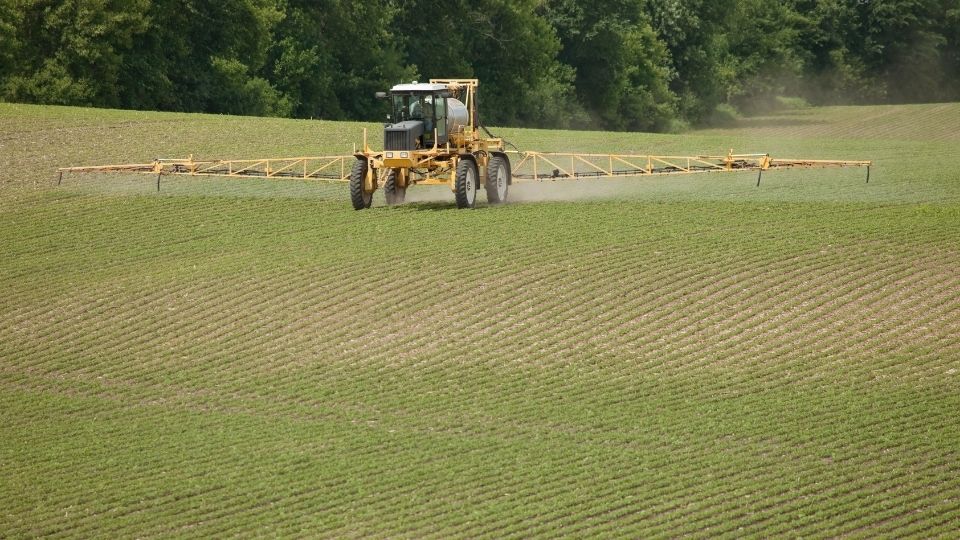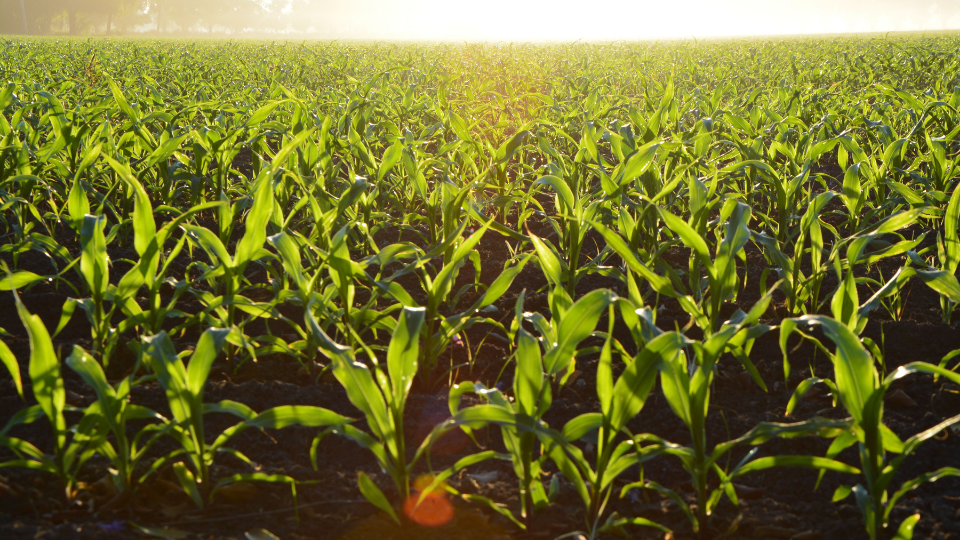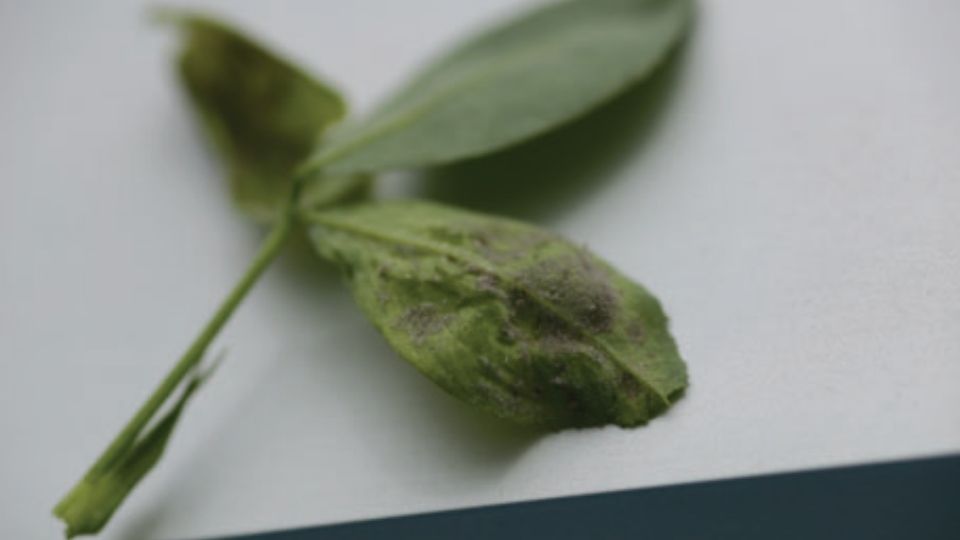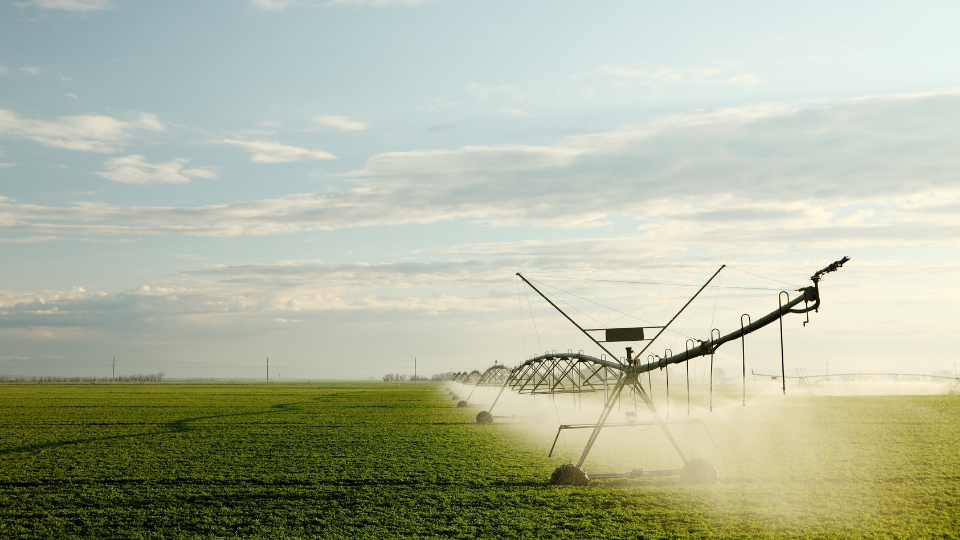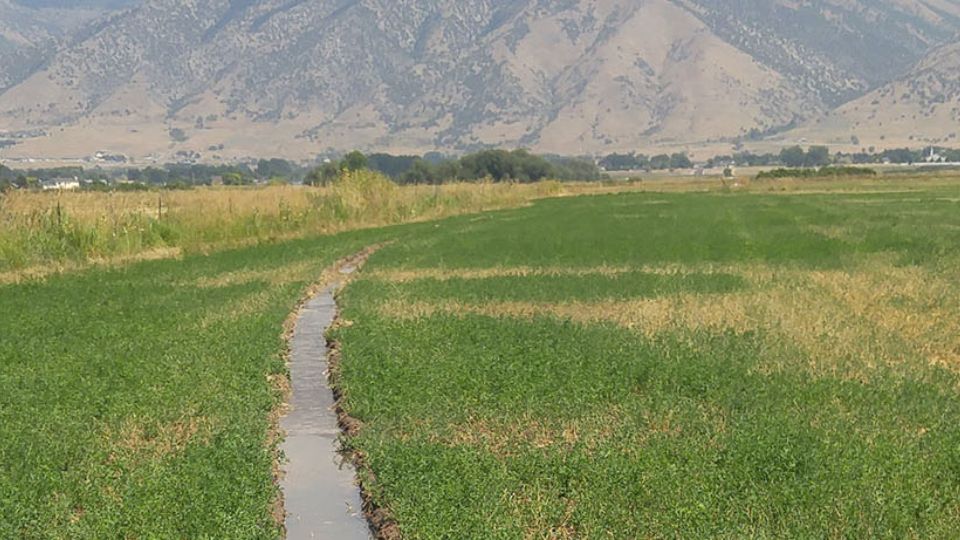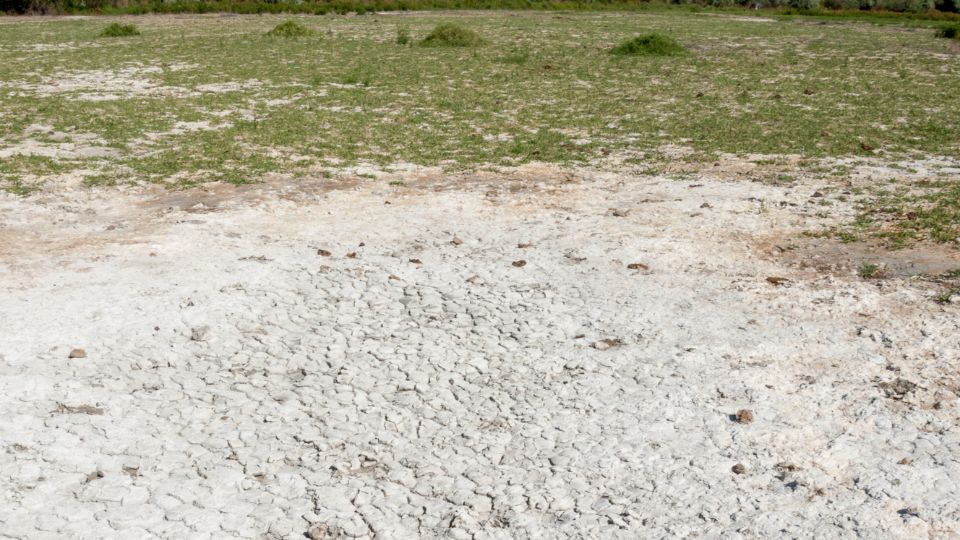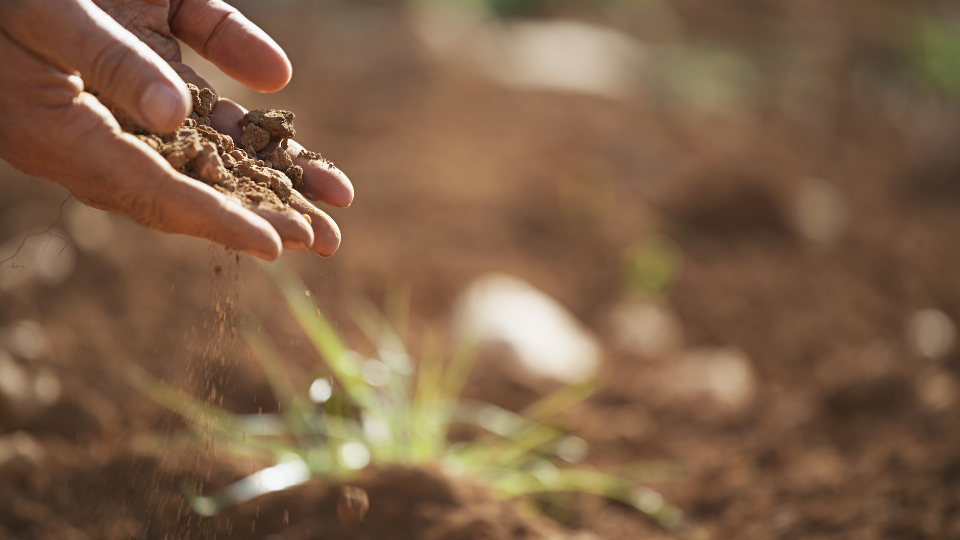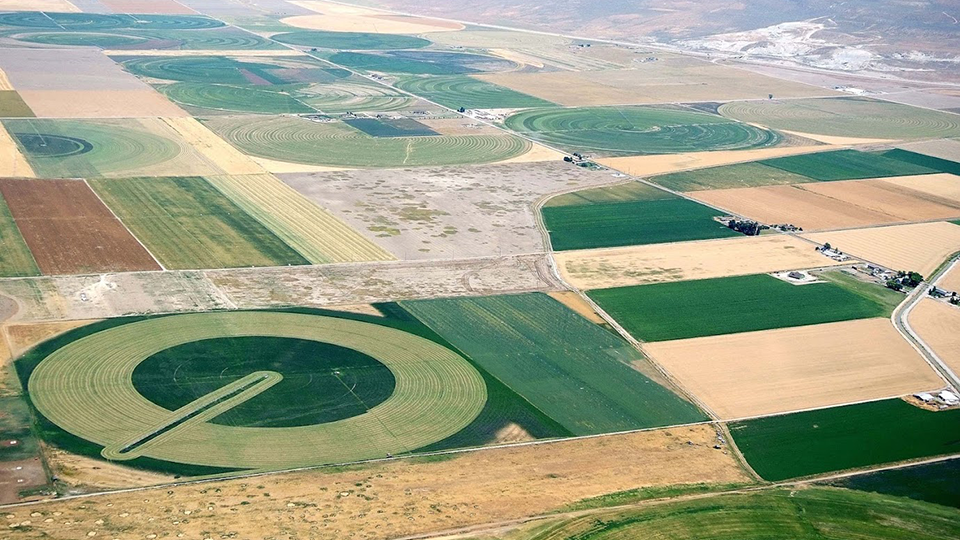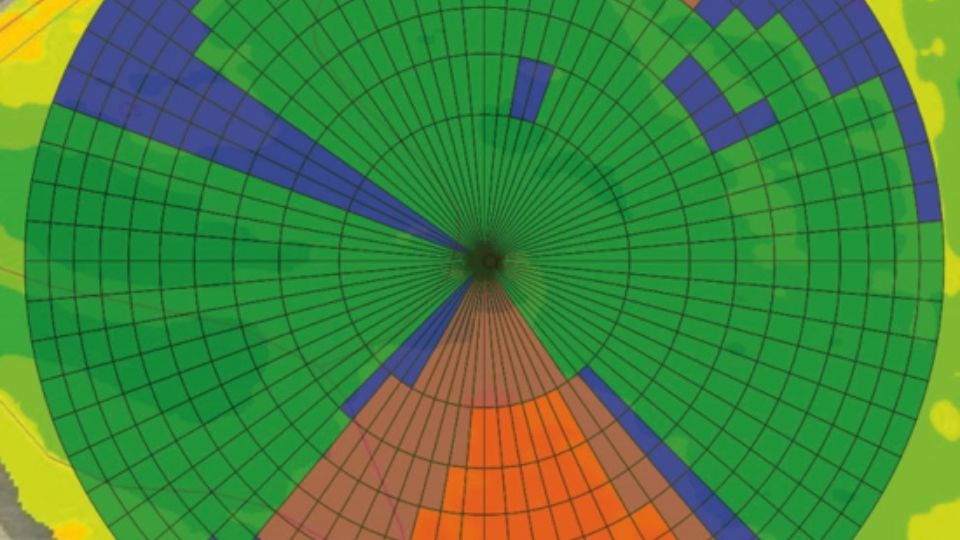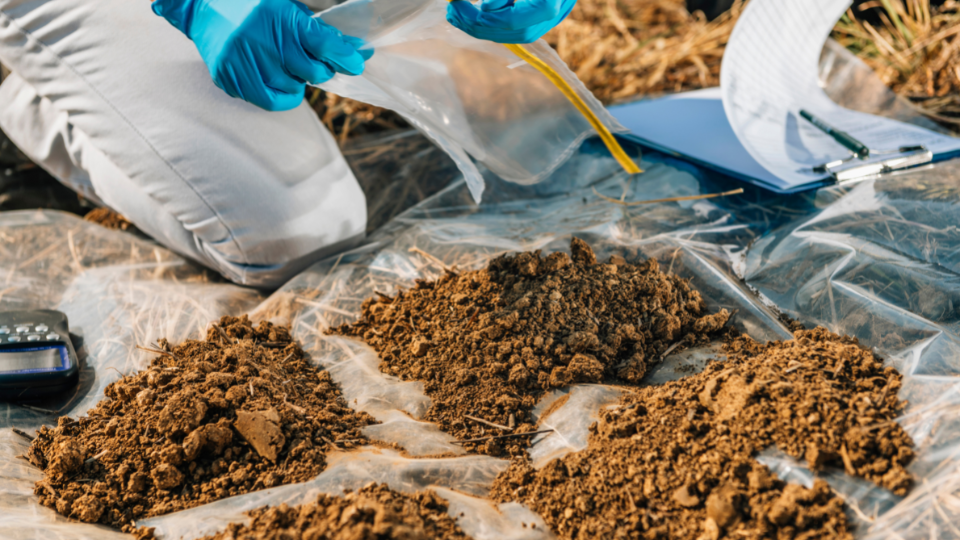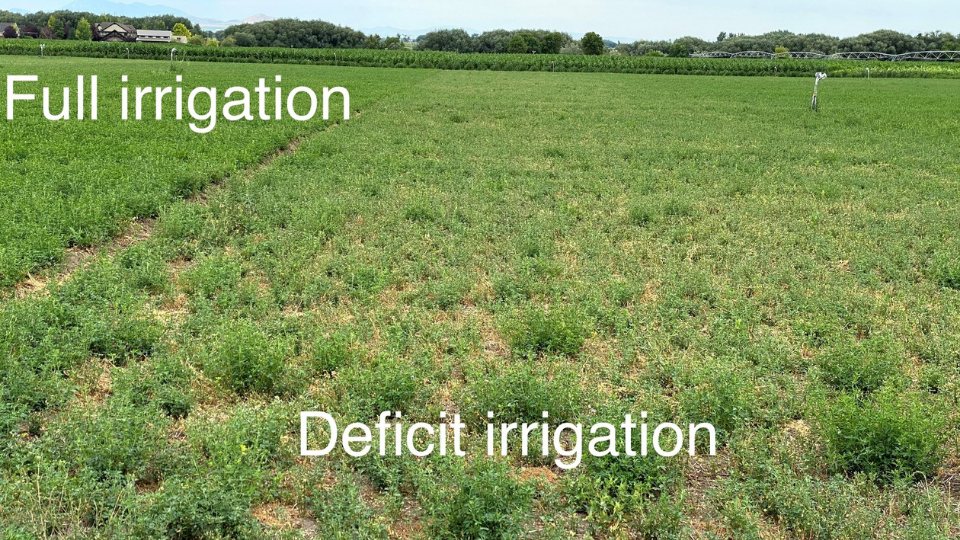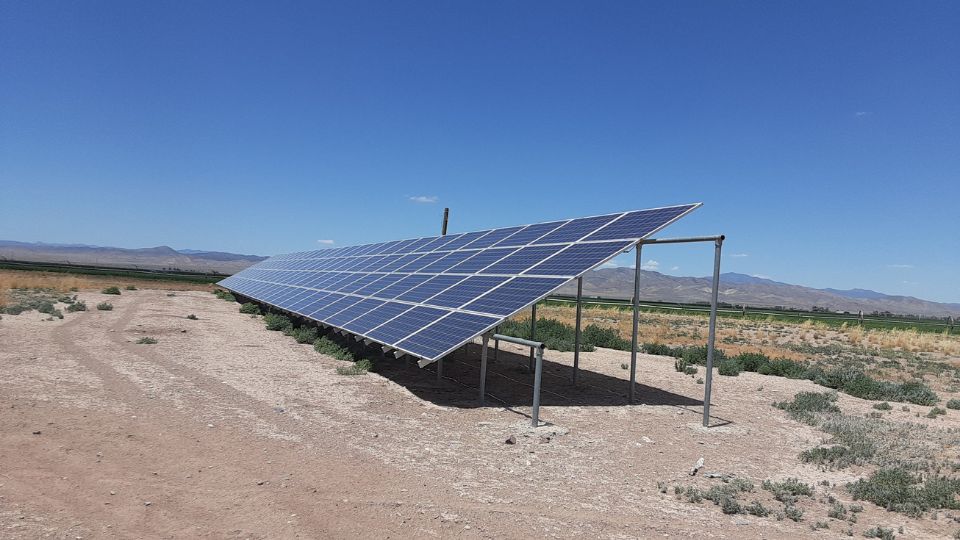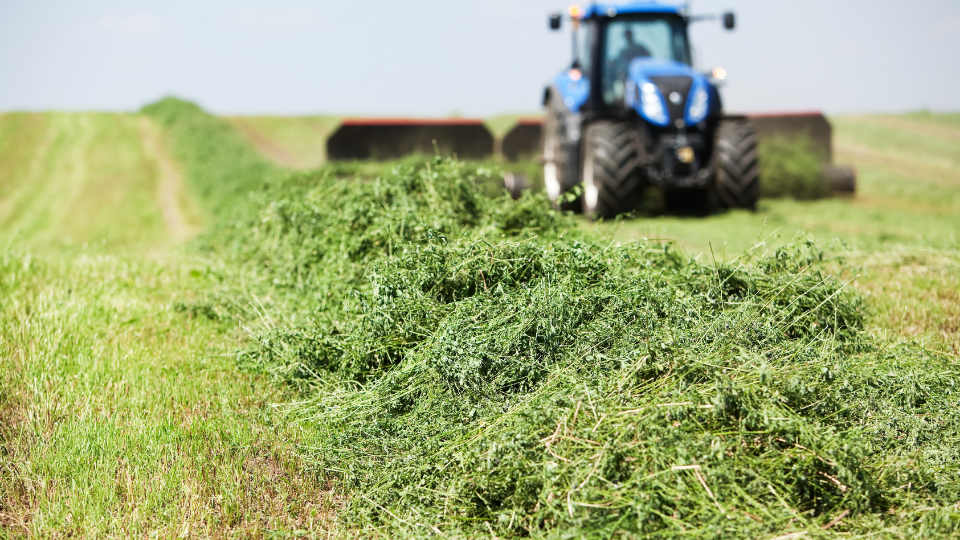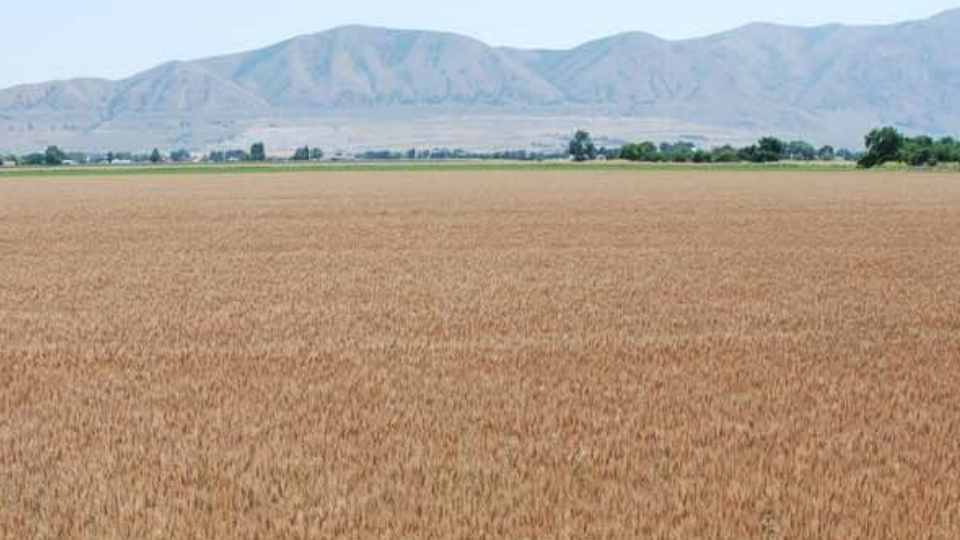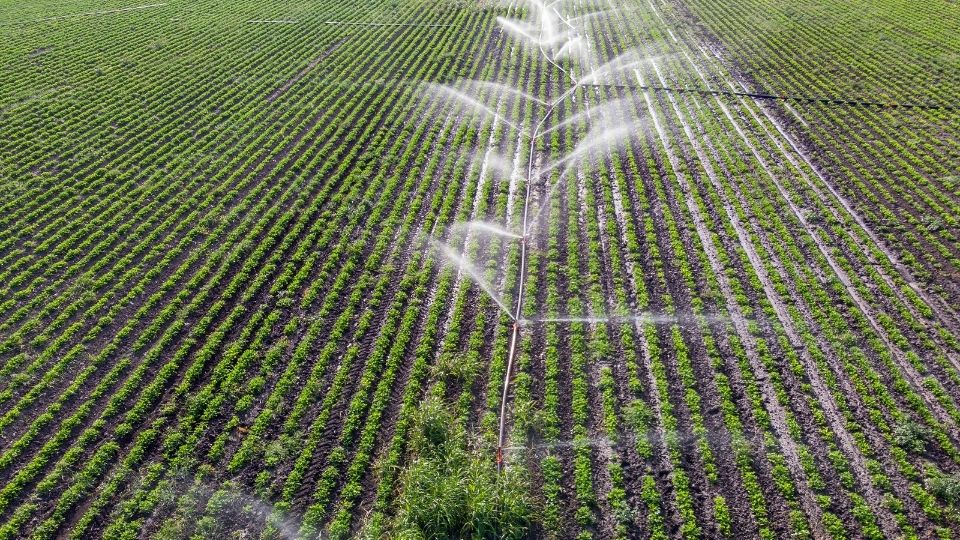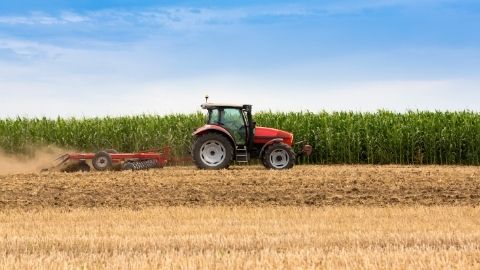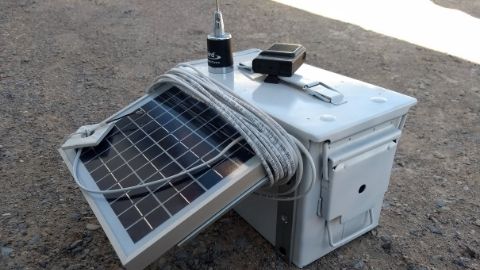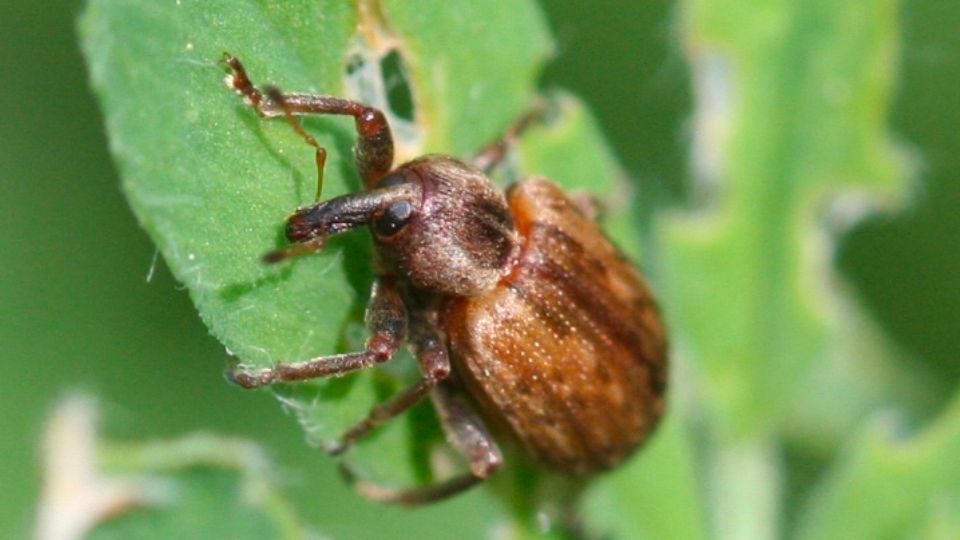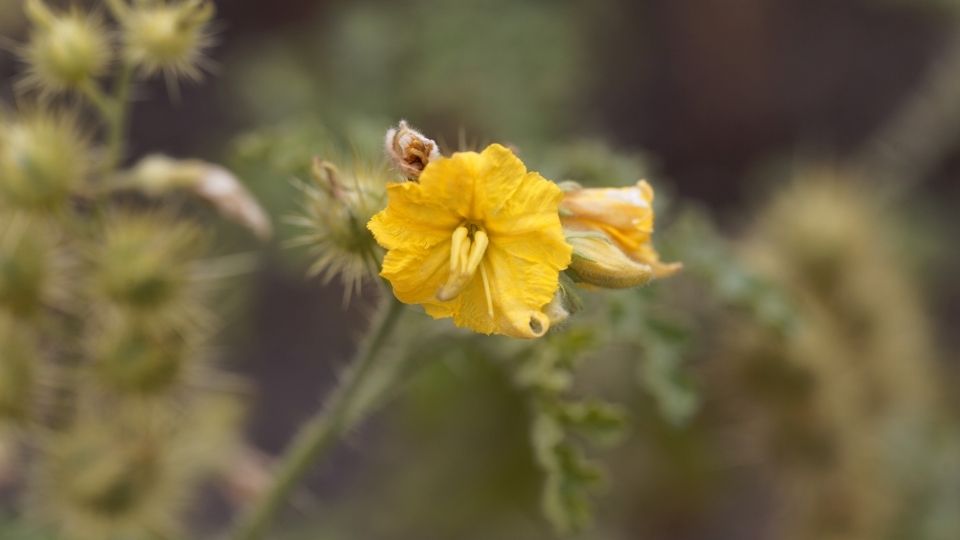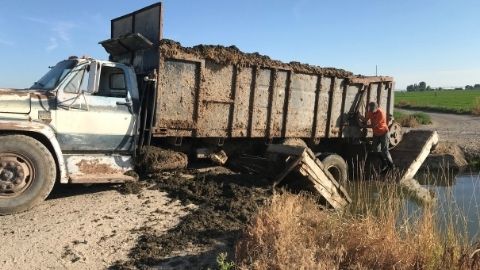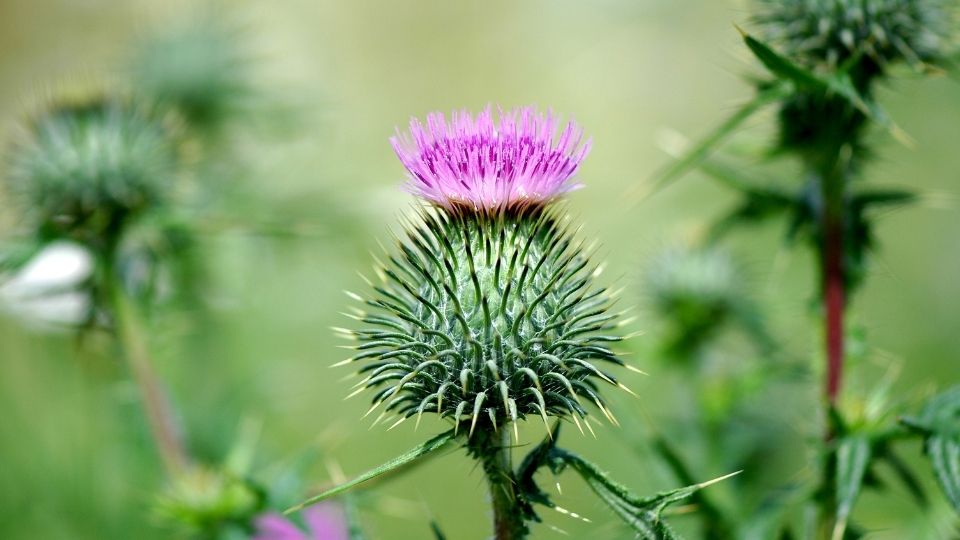Irrigation Water Loss and Recovery in Utah

When deciding which irrigation systems to adopt, permit, or promote, it is important to consider how their efficiency and losses affect the water balance of Utah’s watersheds and drainage basins. Irrigators have no control over precipitation and only limited control of surface waters entering and leaving the state (Figure 1), as most of those are controlled by legal agreements. However, Utah’s water managers, elected officials, and water users can consider how surface water flows and groundwater storage is affected by using more efficient irrigation systems.
Sprinkler, surface, or drip irrigation systems each have trade-offs in irrigation application efficiency, cost, and other factors. While some irrigation systems can be more efficient than others, the destination of consumptive uses, or “lost water,” is a vital consideration for long-term water balance management. Some irrigation system types have losses that are potentially more recoverable compared to others. To make comparisons between systems, this fact sheet1 will define irrigation application efficiency, describe the destinations of irrigation water losses, and discuss how the fraction of recoverable water losses differ for various irrigation delivery systems and what that means for the overall water balance in Utah.
Highlights
- Irrigation systems (sprinkler, surface, and drip) have different application efficiencies typically ranging from 50%-99%.
- Application water “losses” are different for each irrigation system type; losses include evaporation, runoff, deep percolation, and wind drift.
- Recovery, return flow or reuse of lost water also varies among irrigation systems and needs to be considered in relation to application efficiency when evaluating and selecting irrigation systems.

Figure 1. Simplified Depiction of Utah’s Water Balance
Note. Considering the long-term water balance of Utah as a whole, irrigators and water managers have more control of irrigation and tillage, affecting change in water storage and consumptive use.
Irrigation Application Efficiency
Irrigation application efficiency (Ea) can be defined as:
Ea = irrigation water stored in the root zone ÷ irrigation water delivered to the field
Ea is a useful calculation because it allows for comparison among different irrigation systems (Table 1) regardless of the source of “lost” water. It is also important to note Ea is also dependent upon system design, soils, management, and maintenance. The term water loss is used here to describe applied irrigation water that either does not infiltrate into the soil (sprinkler droplet wind drift, evaporation, or surface runoff) or drains below the crop root zone (deep percolation) (Figure 2). Deep percolation associated with salt leaching requirements is considered a loss in the above definition, though it is considered a beneficial water use (Heermann & Solomon, 2007). Rather than considering soil surface evaporation as a “loss,” in the above definition of Ea, the water evaporated from the soil surface is part of evapotranspiration—in other words, consumptive water use.
Tillage is also a factor that affects water loss and overall Ea. It is used for crop establishment and weed control but is a source of evaporative soil water loss. Conventional tillage practices, including plowing and disking, disturb the soil, temporarily increasing evaporation and water infiltration. Conservation tillage, on the other hand, including no-till, reduced, and minimum tillage, disturbs less soil and reduces evaporative losses (O’Brian & Daigh, 2019). While tillage is an important consideration for overall water balance, it is not the focus of this paper.
Table 1
Average Irrigation Application Efficiency (Ea) Various Some Irrigation Systems
| Ea | Irrigation systems and conditions |
|---|---|
| 60%-80% | Line-source sprinkler systems, such as hand line or wheel line. |
| 80%-97% | Center pivot systems, including low elevation spray application (LESA) or low energy precision application (LEPA). |
| 40%-90% | Surface irrigation (depending on the system, soils, and management). |
| ≥ 90% | Drip systems (deployed on the surface, subsurface, or mounted on a pivot, i.e., mobile drip), dependent upon design, maintenance, and management. |
References: Alam, M. (1997); IAEF (2010); Hanson, B. (2004); Brouwer et al. (1989); Burt, C. M. (1995); Burt et al. (2000); Irmak et al. (2011); Kranz, B. (2020); Peters, T. R. & McMoran, D. (2009); Rogers et al. (1997); Sarwar et al. (2019); Solomon, K. H. (1988); Stetson, L. E. & Mecham, B. Q. (2011).
Irrigation Water Losses
Wind Drift and Evaporation
In the dry climates of Utah, wind drift and evaporation from water droplets are almost exclusive to sprinkler systems (Figure 2A). These losses occur between the time the water leaves the sprinkler nozzle and when the remaining water reaches the soil. These losses are usually measured using catch cans on the soil surface and calculated as the difference between the applied depth based on the system flow rate and the depth of water caught in the catch cans. Because large portions of these losses leave the fields as water vapor, they are not always visible and may be “out of sight and out of mind.” However, these water losses can be significant, and evaporation is a non-recoverable loss. Wind drift and evaporation losses ranging from close to zero to as high as 40%–50% have been reported (see references in Table 2), depending on the sprinkler type, height, pressure, and most importantly, the weather. These losses are climate-dependent.
Table 2
Typical Utah Water Losses Through Wind Drift and Evaporation
| Ea | Irrigation systems and conditions |
|---|---|
| 35%-40% | Traveling big guns and pivot end guns. |
| 25%-30% | Impact sprinklers on hand line or wheel lines. |
| 15%-20% | Center pivot mid-elevation spray-application sprinklers. |
| ≥ 5% | LESA or LEPA sprinklers/applicators on center pivots. |
References: Alam, M. (1997); IAEF (2010); Hanson, B. (2004); Brouwer et al. (1989); Burt, C. M. (1995); Burt et al. (2000); Irmak et al. (2011); Kranz, B. (2020); Peters, T. R. & McMoran, D. (2009); Rogers et al. (1997); Sarwar et al. (2019); Solomon, K. H. (1988); Stetson, L. E. & Mecham, B. Q. (2011).

Figure 2. Potential Water Losses From Three Irrigation System Types
Note. Potential water losses may include runoff, deep percolation (caused by non-uniformity), spray losses (evaporation and wind drift), and evaporation from a wet canopy. The primary potential water loss from:
(A) Sprinkler irrigation includes wind drift and evaporation (spray) and deep percolation due to non-uniform irrigation or inadequate irrigation scheduling.
(B) Surface irrigation includes deep percolation and runoff.
(C) Drip irrigation is deep percolation resulting from non-uniformity in emitter flow rates, as depicted in the figure.
Wetted Canopy Evaporation
The amount of evaporation from a wetted crop canopy depends on the canopy size, percentage of the canopy that is wetted, and weather conditions such as temperature, humidity, and air movement. Researchers have found that canopy water losses can be about 4% after each irrigation (Melvin & Martin, 2018). This loss can be minimized by irrigating less frequently with increased water applied per irrigation event. However, this strategy is limited by the soil infiltration rate and water holding capacities. Wetted canopy losses are avoided with surface irrigation, drip systems (Figures 2B and 2C), and LEPA because they do not wet the crop canopy. There is evidence that water evaporating from a wetted canopy partially suppresses evapotranspiration, effectively increasing the Ea (Tolk et al., 1995). Aside from this suppression, canopy evaporation is a consumptive (non-recoverable) loss. When considering using irrigation systems that do not wet the canopy, other important irrigation-related uses may not be possible, including foliar application of fertilizers (fertigation) and pesticides applications(chemigation).
Deep Percolation
Deep percolation occurs when more water infiltrates into the soil than can be stored in the root zone. It is a source of water loss in most irrigation systems, but it is especially prevalent in surface irrigation systems (Figure 2B). This excess water moves downward through the soil profile and drains deeper than the crop’s root zone. Therefore, the crop can no longer access this water. Deep percolation can include water used to meet the salt leaching requirement. Although leaching is defined as a loss here, it is sometimes a necessary component of crop production. Deep percolation water is no longer useful for growing the crop, but it is not a consumptive loss and is potentially recoverable as it moves into the groundwater and eventually remerges as springs or is pumped from wells for reuse. Deep percolation can also be collected in drains or in surface water bodies. However, deep percolated water is typically of lower quality than the source water because of salt, nutrient, and pesticide leaching or dissolved solutes from the underlying geology. This water quality degradation can limit the potential for reuse. That said, return flows from deep percolated water are potentially recoverable, although not always upstream by the original grower who applied the irrigation water. In many cases, downstream water rights are based on return flow.
Deep percolation more than salt leaching requirements primarily results from irrigation mismanagement or poor system uniformity. Poor irrigation system uniformity occurs when an irrigation system does not apply an equal amount (depth) of water to all areas of a field. This may cause over or under irrigation in some or much of a field. No irrigation system is perfectly uniform, so a certain amount of deep percolation loss is expected. However, surface irrigation can be subject to greater deep percolation losses since it takes time for water to move across a field (Figure 2B). The top of the field may have water infiltrating and deep percolation for many hours before the bottom or middle of the field receives adequate water for crop growth. Water losses to deep percolation in surface irrigation can be as high as 50%–70%, particularly at the top of a field and/or the bottom if water is allowed to pond while trying to adequately irrigate the middle of the field. Flat or steeply sloped fields generally have higher losses
Runoff
Unlike the other large losses (evaporation and deep percolation), runoff is visible, and most irrigators can easily see and manage it. Although runoff water quality is often degraded due to nutrient and sediment loading from running across fields, it is often collected in streams, ponds, or drainage ditches and is reused downstream for irrigation, recreation, or wildlife habitat.
Potentially Recoverable and Non-Recoverable Irrigation Water
Water losses from irrigation can be classified as recoverable and non-recoverable:
- Recoverable water losses = deep percolation and runoff.
- Non-recoverable water losses = wetted crop canopy evaporation and wind drift.
Based on these definitions, recoverable is synonymous with return flow and non-recoverable is synonymous with consumptive use, which also includes the water consumed by the crop (evapotranspiration). In Utah, sprinkler-based systems, such as big guns, hand lines, wheel lines, and solid sets, have larger estimated nonrecoverable losses than other sprinkler systems like LESA, LEPA, or MESA (Figure 3).2 In contrast, relative to the sprinkler-based systems, surface- and drip-based systems have greater potentially recoverable losses than non-recoverable irrigation water losses.
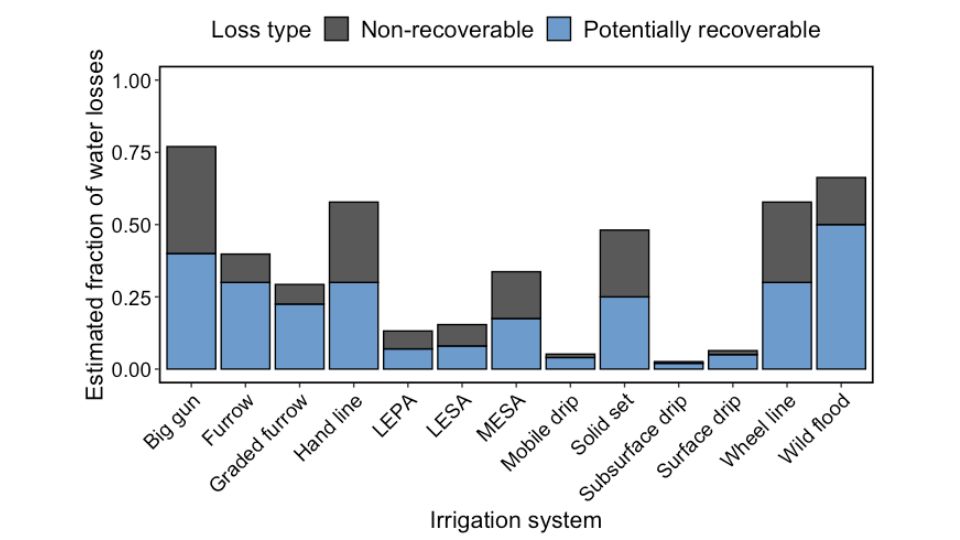
These two classes of losses can also be described using a ratio of potentially recoverable losses (PRl):
PRI = recoverable losses ÷ non-recoverable losses
This ratio can be used to describe the amount of irrigation water losses that contribute to groundwater recharge or return flow to surface water bodies. A low 1:1 ratio indicates a system loses as much recoverable as non-recoverable water. In contrast, a system with a higher 3:1 ratio will potentially have three times as much recoverable water than non-recoverable (Figure 4). For example, although wild flood surface irrigation has greater total losses reflected by a low Ea than wheel line sprinklers (Figure 3), wild flood does have a higher PRl ratio than sprinkler-based systems (Figure 4). This means that while sprinkler-based systems such as wheel line may have higher Ea ratio than wild flood, surface flood systems have a higher PRl ratio, indicating a greater potential for recoverable water. Depending on the point of view, this may have a more beneficial impact on Utah’s overall water balance. When planning, promoting, or permitting irrigation system technology improvements, a key concern is the trade-off between the increased Ea ratio and the decreased PRl ratio. This concerns centers on potentially losing the of benefit of groundwater recharge, surface water flows, and return flow versus increased efficiency and decreased consumptive use losses.
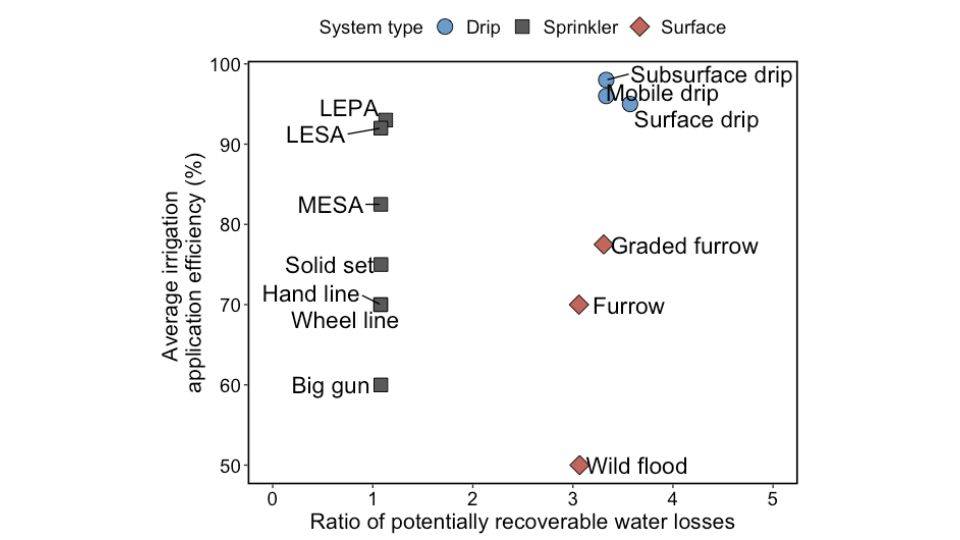
The Big Picture

Overall, considering Utah's water balance and reducing non-recoverable losses, lower Ea surface irrigation may not always be a negative choice because a notable fraction of losses from surface irrigation may be recoverable. Though undesirable in the short-term and from a water delivery and supply capacity point-of-view, these losses may be less impactful on groundwater recharge and instream flow in the long-term. When growers upgrade surface irrigation to sprinkler irrigation systems, they often see better yields. This is the result of the ability to irrigate more frequently and uniformly. However, sprinklers also lose more water to evaporation from wind, spray drift, and frequent canopy wetting. In contrast, surface irrigation water losses are primarily deep percolation and field runoff. Because of these 8 factors, converting farms’ irrigation systems from surface to sprinklers, may not result in more water becoming available for use within Utah.
Conclusion
Each irrigation system type has benefits and drawbacks viewed from the perspective of a grower, a water manager, or other stakeholders. Although there are more efficient irrigation systems, based on the fraction of recoverable losses, some fields and areas in Utah with declining aquifers may be best served by continuing to use less efficient surface irrigation systems, depending on the considered trade-offs, needs, and constraints of a particular area. Therefore, water users, planners, and managers should consider both Ea and PRl recoverable losses when designing, managing, and modifying irrigation systems. The fraction of recoverable losses presented here is a helpful calculation for comparing the efficiencies, performance, and water loss of various irrigation systems and an area’s unique water needs.
Notes
References
- Alam, M. (1997, February 4). Irrigation efficiencies of surface systems. In Central Plains Irrigation Short Course and Exposition Proceedings, Colby, KS. Colorado State University Libraries.
- Brouwer, C., Prins, K., & Heibloem, M. (1989). Irrigation water management: Irrigation scheduling. In Training Manual No. 4. Food and Agriculture Organization. http://www.fao.org/tempref/agl/AGLW/fwm/Manual4.pdf.
- Burt, C. M. (1995). The surface irrigation manual. Waterman Industries.
- Burt, C. M., Clemmens, A. J., Bliesner, R., Merriam, J. L., & Hardy, L. (2000). Selection of irrigation methods for agriculture. American Society of Civil Engineers. https://doi.org/10.1061/9780784404621.
- Hanson, B., Schwankl, L., & Fulton, A. (2004). Scheduling irrigations: When and how much water to apply. Division of Agriculture and Natural Resources, University of California.
- Heermann, D. F., & Solomon, K. H. (2007). Chapter 5: Efficiency and uniformity. In G. J. Hoffman, R. G. Evans, M. E. Jensen, D. L. Martin, & R. L. Elliot (Eds.), Design and Operation of Farm Irrigation Systems (2nd ed.). American Society of Agricultural and Biological Engineers.
- Irrigation Association Education Foundation (IAEF). (2010). Principles of irrigation (2nd ed). Irrigation Association.
- Irmak, S., Odhiambo, L. O., Kranz, W. L., & Eisenhauer, D. E. (2011). Irrigation efficiency and uniformity, and crop water use efficiency [Fact sheet EC732]. University of Nebraska – Lincoln Extension. https://digitalcommons.unl.edu/cgi/viewcontent.cgi?article=1455&context=biosysengfacpub.
- Kranz, B. (2020). Irrigation chapter 8 - Irrigation efficiencies. In Irrigation Home Study Course. University of Nebraska – Lincoln. https://passel2.unl.edu/view/lesson/bda727eb8a5a/8.
- Melvin, S., & Martin, D. (2018). In-canopy vs. above-canopy sprinklers: Which is better suited to your field? In Proceedings of the 30th Annual Central Plains Irrigation Conference (pp. 157–165). Institute of Agriculture and Natural Resources, Cropwatch. University of Nebraska – Lincoln.
- O’Brien, P. L., & Daigh, A. L. M. (2019). Tillage practices alter the surface energy balance – A review. Soil and Tillage Research, 195. https://doi.org/10.1016/j.still.2019.104354.
- Peters, R. T., & McMoran, D. (2008). Boom-type carts vs. big-guns in northwestern Washington. Proc. Int. Irrigation Show, 27–38.
- Rogers, D. H., Lamm, F. R., Mahbub, A., Trooien, T. P., Clark, G. A., Barnes, P. L., & Kyle, M. (1997). Efficiencies and water losses of irrigation system. Irrigation Management Series, Kansas State University Extension.
- Sarwar, A., Peters, R. T., Mehanna, H., Amini, M. Z., & Mohamed, A. Z. (2019). Evaluating water application efficiency of low and mid elevation spray application under changing weather conditions. Agricultural Water Management, 221, 84–91. https://doi.org/10.1016/j.agwat.2019.04.028.
- Solomon, K. H. (1988). Irrigation notes: Irrigation system selection, irrigation systems and water application efficiencies. Center for Irrigation Technology, California State University-Fresno. http://cati.csufresno.edu/cit/rese.
- Stetson, L. E., & Mecham, B. Q. (2011). Irrigation (6th ed.). Irrigation Association.
- Tolk, J. A., Howell, T. A., Steiner, J. L., Krieg, D. R., & Schneider, A. D. (1995). Role of transpiration suppression by evaporation of intercepted water in improving irrigation efficiency. Irrigation Science, 16(2), 89–95. https://pubag.nal.usda.gov/download/1102/pdf.
Published August 2022
Utah State University Extension
Peer-reviewed fact sheet
Authors
Bradley Crookston, Troy Peters, Matt Yost, and Burdette Barker
Related Research




